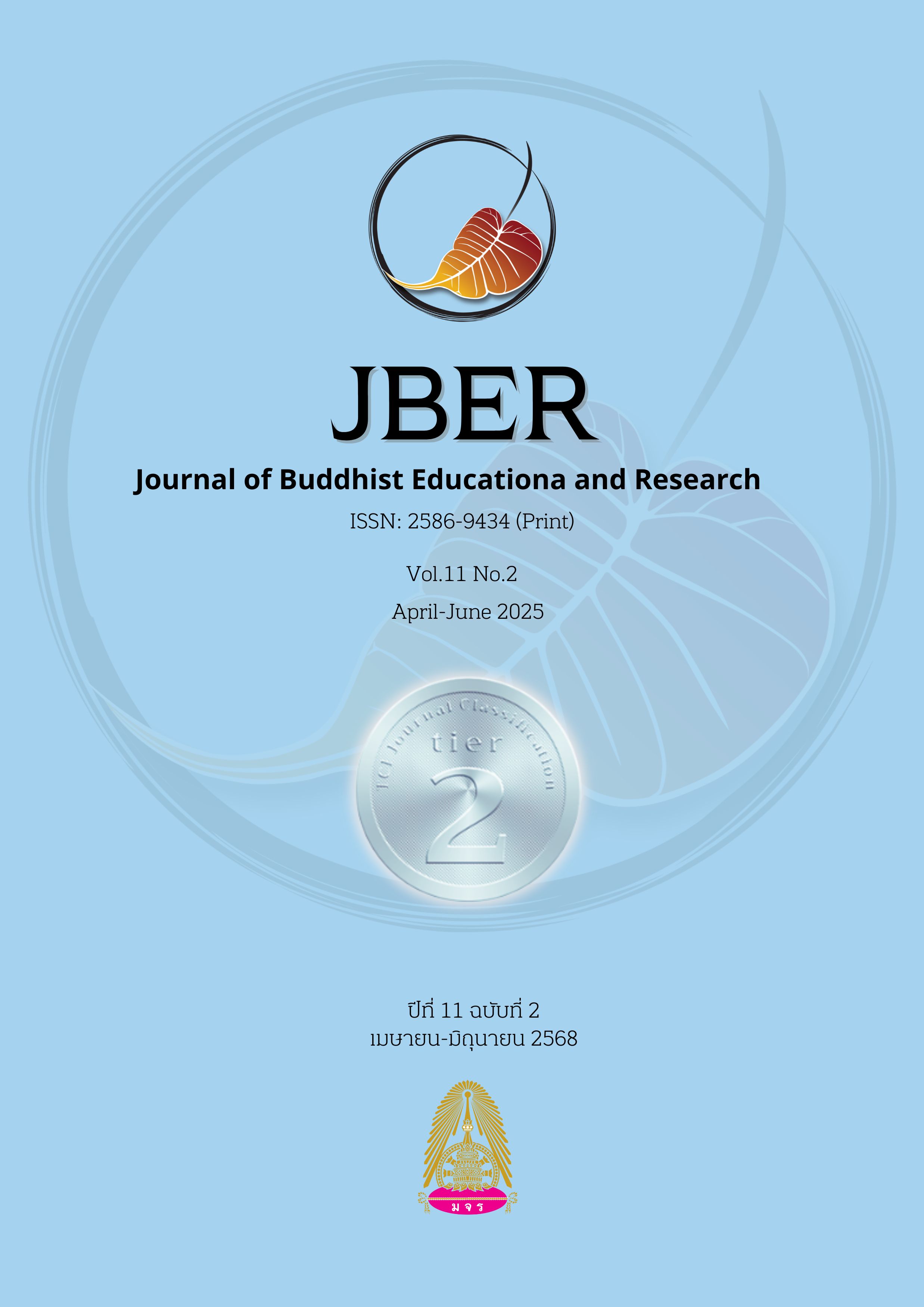Education Management for Equality and Reducing Education Inequality
Keywords:
Education Management, Equality, Education InequalityAbstract
Education is recognized as an important mechanism for national development, but the situation in education shows that the problem of inequality and educational opportunities is still a problem that has existed for a long time. This is due to the prevalence of inequality in various aspects of education, including the quality of different schools. Education is not comprehensive in remote areas. The shortage of scholarships, economic problems, and the pandemic are all important factors that result in Thai children being pushed out of the education system. In addition, the situation of inequality is linked to the quality of education and is linked to the affiliation of the educational institution. The size of the educational institution and the economic status of the household. This paper aims to analyze the causes of educational opportunities that affect educational inequality, focusing on seeking guidelines and suggestions for educational institutions to lead to the design of educational management for equality and reduce inequality. Some of the data was obtained from data collection under the expansion project and the development of a data collection system in accordance with the sustainable development goals in provincial education. The Northeast Region was presented to the Office of the Education Equity Fund in 2022 and was obtained from interviews with administrators of basic education institutions. It was concluded that the concept of education for equality and inequality reduction is consistent and in the same direction as the concept of human capital development. Education management is the cornerstone of developing people to have physical qualities; mental and social education can create a career. Therefore, education management is for the development of human quality and economic development and social stability as a whole. Therefore, the duty of educational institutions must be to manage education in terms of policy, education, and education. Principles and resources are available to manage education equitably without discrimination. Whether it is the management of the teaching and learning curriculum that arises from the participation of stakeholders. Organize teaching and learning courses in accordance with wisdom, locality, and culture, and promote learning that can be applied in daily life. Reduce competition and rule-making; social rules avoid reproduction and overcrowding, creating conflicts by classifying learners and types of study plans in educational institutions.
References
กองทุนเพื่อความเสมอภาคทางการศึกษา. (2567). สถานการณ์ความเหลื่อมล้ำทางการศึกษาปี 2567 และทิศทางสําคัญในปี 2568. สืบค้นจาก https://www.eef.or.th/wp-content/uploads/2025/02/Inequality-situation-report.pdf
กองยุทธศาสตร์การพัฒนาทรัพยากรมนุษย์และสังคม. (2567). สศช. ร่วมกับ UNICEF และ TDRI ขับเคลื่อนการพัฒนาทุนมนุษย์. สำนักงานสภาพัฒนาการเศรษฐกิจและสังคมแห่งชาติ. สืบค้นจาก https://www.nesdc.go.th/ewt_news.php?nid=15958&filename=index
กิตติศักดิ์ อุไรวงค์. (2567). การศึกษาเพื่อแก้ปัญหาความยากจนและลดความเหลื่อมล้ำ: กรณีศึกษาองค์ความรู้และแนวคิดจากประสบการณ์ของต่างประเทศ. สำนักวิชาการ สำนักงานเลขาธิการวุฒิสภา. สืบค้นจาก https://www.senate.go.th/assets/portals/1/news/16169/2_16169.pdf
จุไรลักษณ์ เอี้ยวพันธ์. (2567). งบการศึกษาไทยจัดสรรอย่างไรให้เกิดประสิทธิภาพ. สำนักงบประมาณของรัฐสภา. สืบค้นจาก https://web.parliament.go.th/view/82/News_Detail/2567/1442/TH-TH
ณัชชา มหาปุญญานนท์. (2566). ข้อเสนอแนะเชิงนโยบายการแก้ปัญหาความเหลื่อมล้ำทางการศึกษาในประเทศไทย. วารสารศึกษาศาสตร์ มหาวิทยาลัยมหาสารคาม, 17(1), 18–39.
ทิพย์พาพร ตันติสุนทร. (2564). การลดความยากจนและเหลื่อมล้ำด้วยทางการศึกษา. สถาบันพัฒนาประชาสังคม. สืบค้นจาก https://www.csdi.or.th/2021/09/ending-poverty/
ธนกร วรพิทักษานนท์, & ศยามล เจริญรัตน์. (2565). ผลกระทบของความเหลื่อมล้ำต่อการเข้าศึกษาต่อระดับอุดมศึกษาของนักเรียนไทย. วารสารวิจัยวิชาการ, 5(6), 203–216.
มติชน. (2568). กสศ.เผยตัวเลขความเหลื่อมล้ำปี 67 พบเด็กยากจนพิเศษ 1.34 ล้านคน 1.1 ล้านคน ยังไม่ได้รับความช่วยเหลือ. สืบค้นจาก https://www.matichon.co.th/local/education/news_5036889
รัฐธรรมนูญแห่งราชอาณาจักรไทย พุทธศักราช 2560. (2560). ราชกิจจานุเบกษา, 134(ตอนที่ 40 ก), 1–94.
ราชบัณฑิตยสถาน. (2556). พจนานุกรม ฉบับราชบัณฑิตยสถาน พ.ศ. 2554. ศิริวัฒนา.
สฤณี อาชวานันทกุล. (2554). ความเหลื่อมล้ำฉบับพกพา. เปนไทพับลิชชิ่ง.
สำนักงานสภาพัฒนาการเศรษฐกิจและสังคมแห่งชาติ. (2567). เศรษฐกิจไทยไตรมาสที่สามของปี 2567 และแนวโน้มปี 2567–2568. สืบค้นจาก https://www.nesdc.go.th/ewt_dl_link.php?nid=15873
อติวิชญ์ แสงสุวรรณ. (2558). ความเหลื่อมล้ำ. สำนักงานเลขาธิการสภาผู้แทนราษฎร.
อิทธิพล พลเหี้ยมหาญ. (2562). โรงเรียนมัธยมศึกษาขนาดเล็ก: ปัญหาใหญ่ของการศึกษาไทย. วารสารสถาบันพิมลธรรม, 6(2), 93–103.
Bourdieu, P., & Passeron, J. C. (1977). Reproduction in education, society and culture. London: Sage.
CHEEWID. (2025). ความเหลื่อมล้ำทางการศึกษา: ปัญหา และแนวทางแก้ไข. สืบค้นจาก https://blog.cheewid.com/social-empowerment/educational-inequality-issues/
ISSC, IDS, & UNESCO. (2016). World social science report 2016: Challenging inequalities – Pathways to a just world. Paris: UNESCO Publishing.
Thaipublica. (2024). World Bank ประเมิน Real GDP ไทยปี 2567 ที่ 2.4% ตามหลังอาเซียน. สืบค้นจาก https://thaipublica.org/2024/10/world-bank-east-asia-and-pacific-economic-update/
Downloads
Published
How to Cite
Issue
Section
Categories
License
Copyright (c) 2025 Journal of Buddhist Education and Research (JBER)

This work is licensed under a Creative Commons Attribution-NonCommercial-NoDerivatives 4.0 International License.





